Sweetwaters Camp – A Game Drive to Remember
My last post on Kenya was Sweetwaters Tented Camp- A Fantastic Introduction to Africa, but that was a bit of a misnomer. There was so much to write about Nairobi and the journey to Sweetwaters Camp that I ended the post just as we arrived at the camp. In this post I will describe the camp in more detail to give the reader a better idea of what to expect should you decide to ‘go on safari’. After that we will head out for our first game drive and Alison and I really have no idea what to expect. Won’t you come along for the ride?
Sweetwaters Camp is located inside Ol Pejeta Conservancy, a 90,000 acre preserve run by a not-for-profit organization that specializes in rhino protection and operates a chimpanzee orphanage as well. You might know it from the television series Ol Pejeta Diaries which airs on a number of nature based channels around the world.
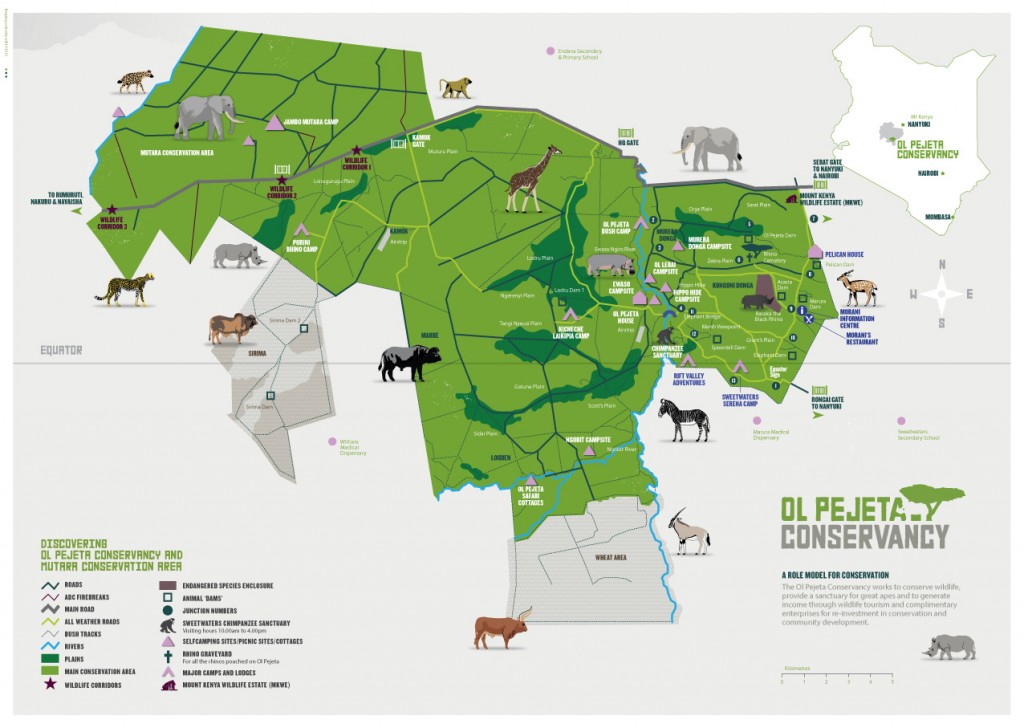
Sweetwaters Camp
Sweetwaters Camp is located just inside the lower right side of the map and is operated by the Serena Hotels Group, a luxury hotel chain that runs hotels and tented camps in Kenya, Tanzania and several other east African countries.
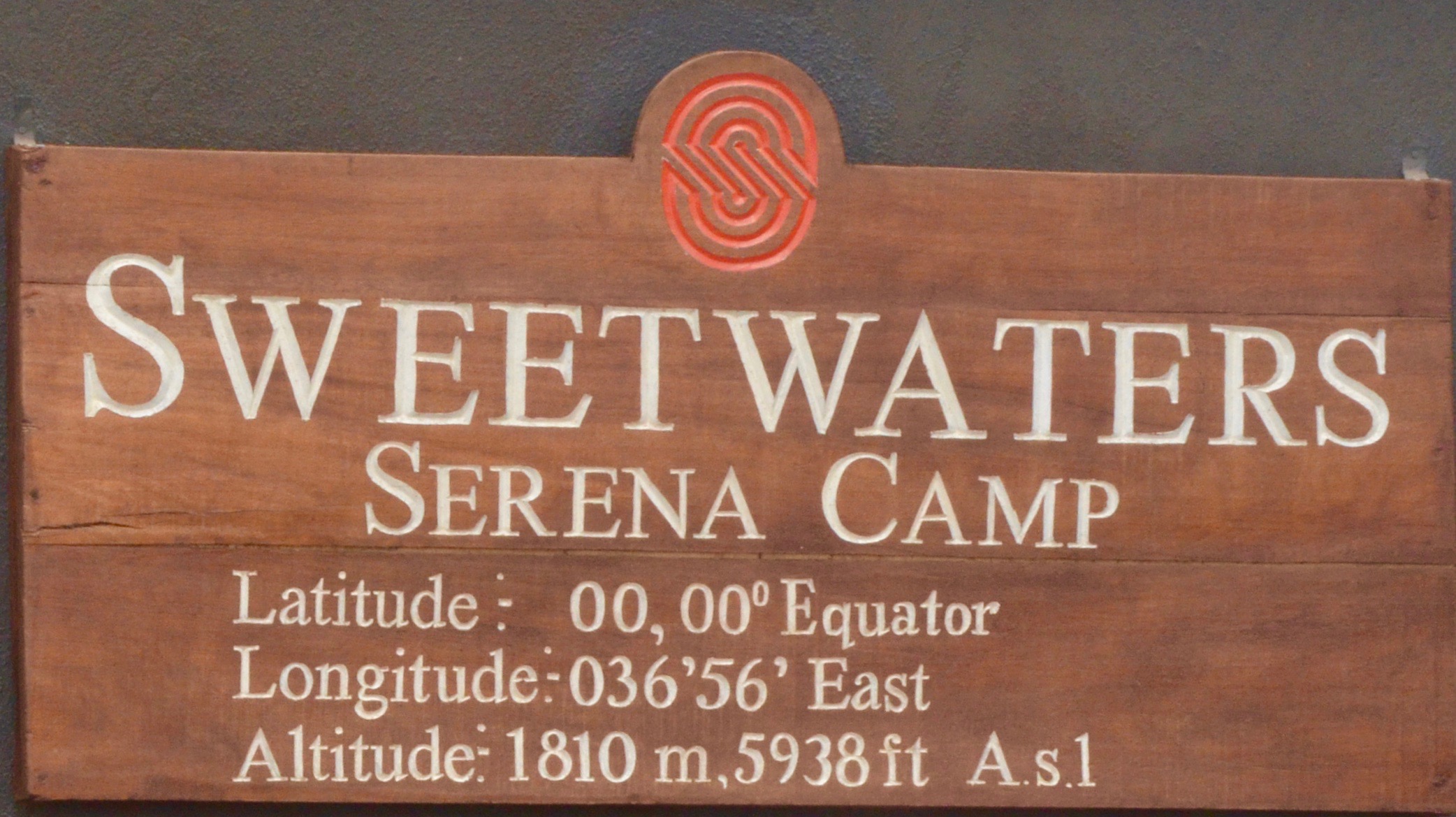
So that’s the first clue that these camps don’t exactly involve ‘roughing it’. That becomes apparent from the moment we arrive as we see people lounging around the swimming pool and others staring into their iPhones or laptops. The good news is that, while there is wifi, there’s no TV or telephone in the tents. I at least want some semblance of semi-hardship to brag about when we get back to Canada.
Sweetwaters Camp is located on land that was once part of a huge ranch owned by a guy named Seagar Bastard (really).
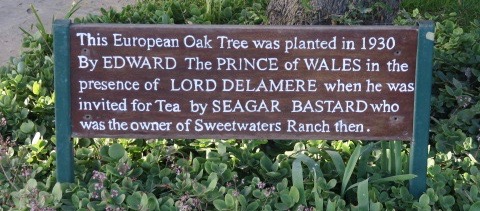
The main building was apparently once the Bastard homestead, but it must have been extensively renovated because it looks much more modern than something that’s been around since the 1930’s or before.
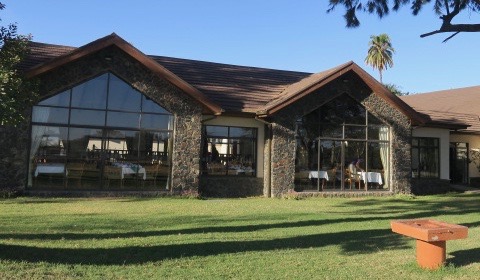
The actual tented camps are located in two semi-circular rows around a watering hole, the ones closest to the water being on ground level and those in the second row on stilts. This is ours. As you can see they have thatched roofs and an outdoor patio. The only thing really tent like about them is that they do have canvas walls.
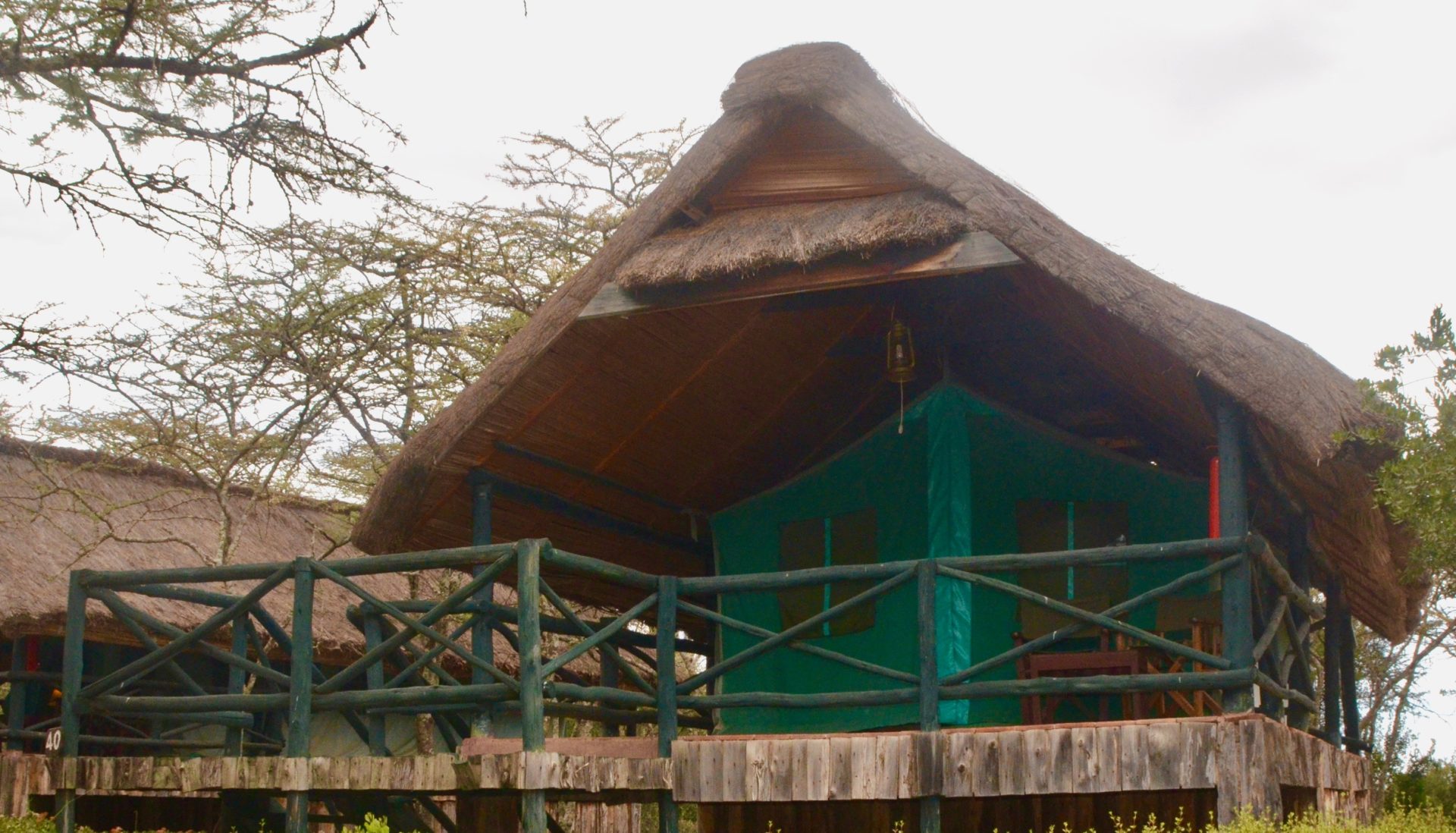
This is the interior, complete with indoor plumbing. No cold showers or outhouses for us.
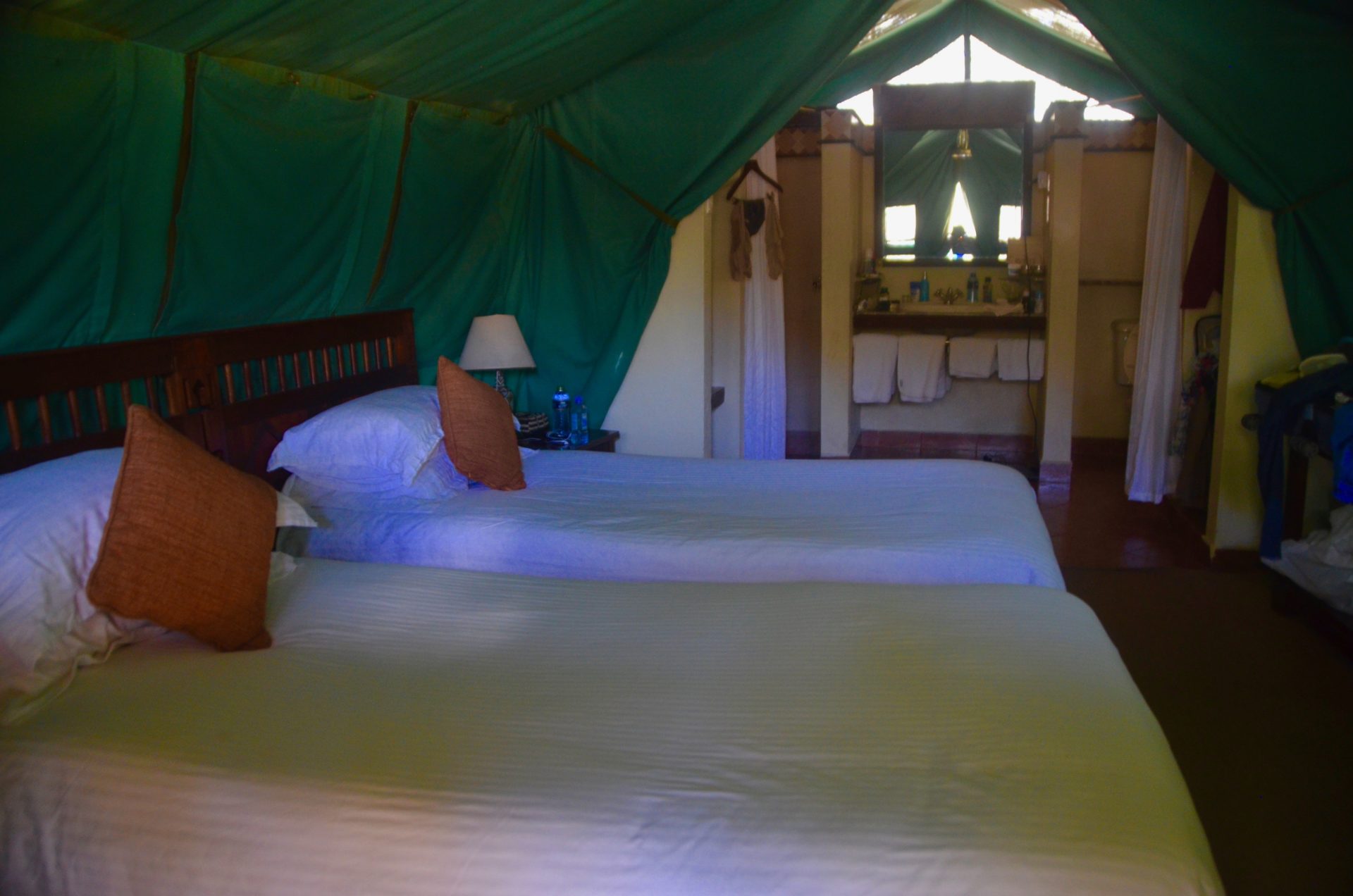
The day at Sweetwaters Camp, and all others for that matter, is divided into three parts. The morning game drive usually starts at sunrise and goes for about three hours. Then it’s back to camp for a late breakfast, relaxation on the patio and maybe an afternoon siesta. The afternoon game drive starts at three and goes almost until sundown after which it’s time for cocktails and dinner. The meals at Sweetwaters Camp are all buffets, but there is a wide variety of cuisines to choose from and the food is really good. I ate a lot of curries and other Indian offerings while in Kenya and was none the worse for it.
We had some time before our first game drive and I had a chance to walk around the camp. Technically it is all fenced in, but as far as I could tell there was nothing stopping lions, leopards and hyenas from coming right up to the waterhole. It was pretty quiet in the heat of the afternoon sun, but there were some interesting birds around including this well named Superb Starling. They are as ubiquitous in Kenya as our starlings are back home.
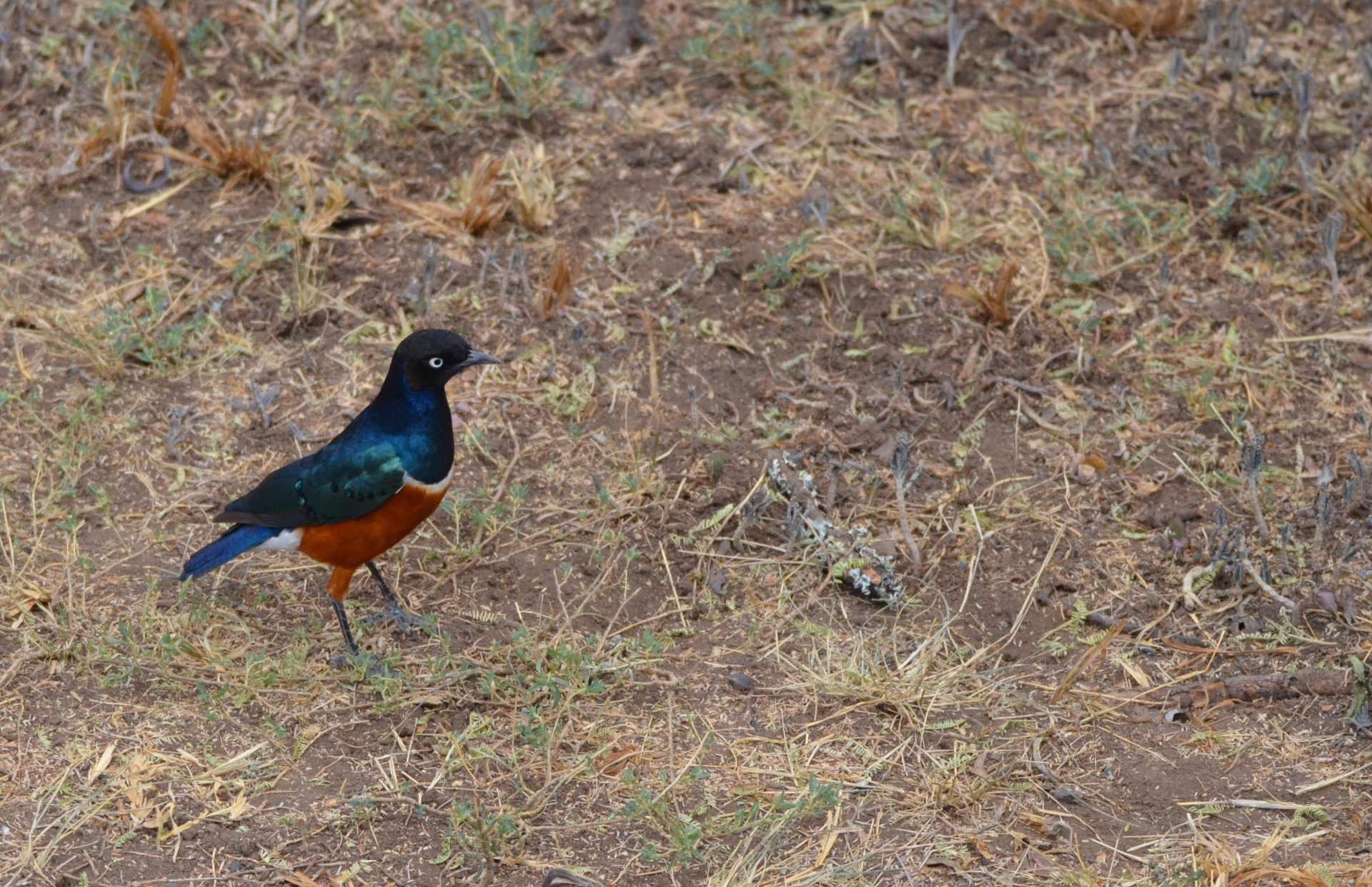
This is a Baglafecht weaver. I was to find out there are many varieties of weaver birds in Kenya and they are a constant source of amusement as the males work non-stop on weaving their nests and attracting females to them. The females are very picky in which they choose. The male weavers practically go nuts when a female goes inside the nest and then you can see the absolute dejection in them when she flies off. If there was ever a bird that deserved to be called a cock-teaser, it is these female weaver birds.
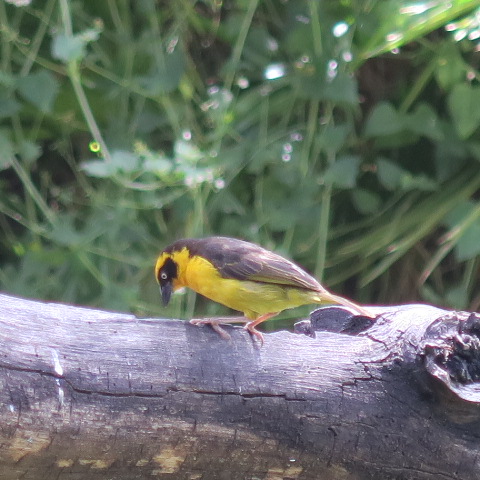
Every waterhole in Kenya seems to have its resident pair of Egyptian geese and Sweetwaters Camp was no exception. This is the gander keeping a close eye on the goslings that are nearby.
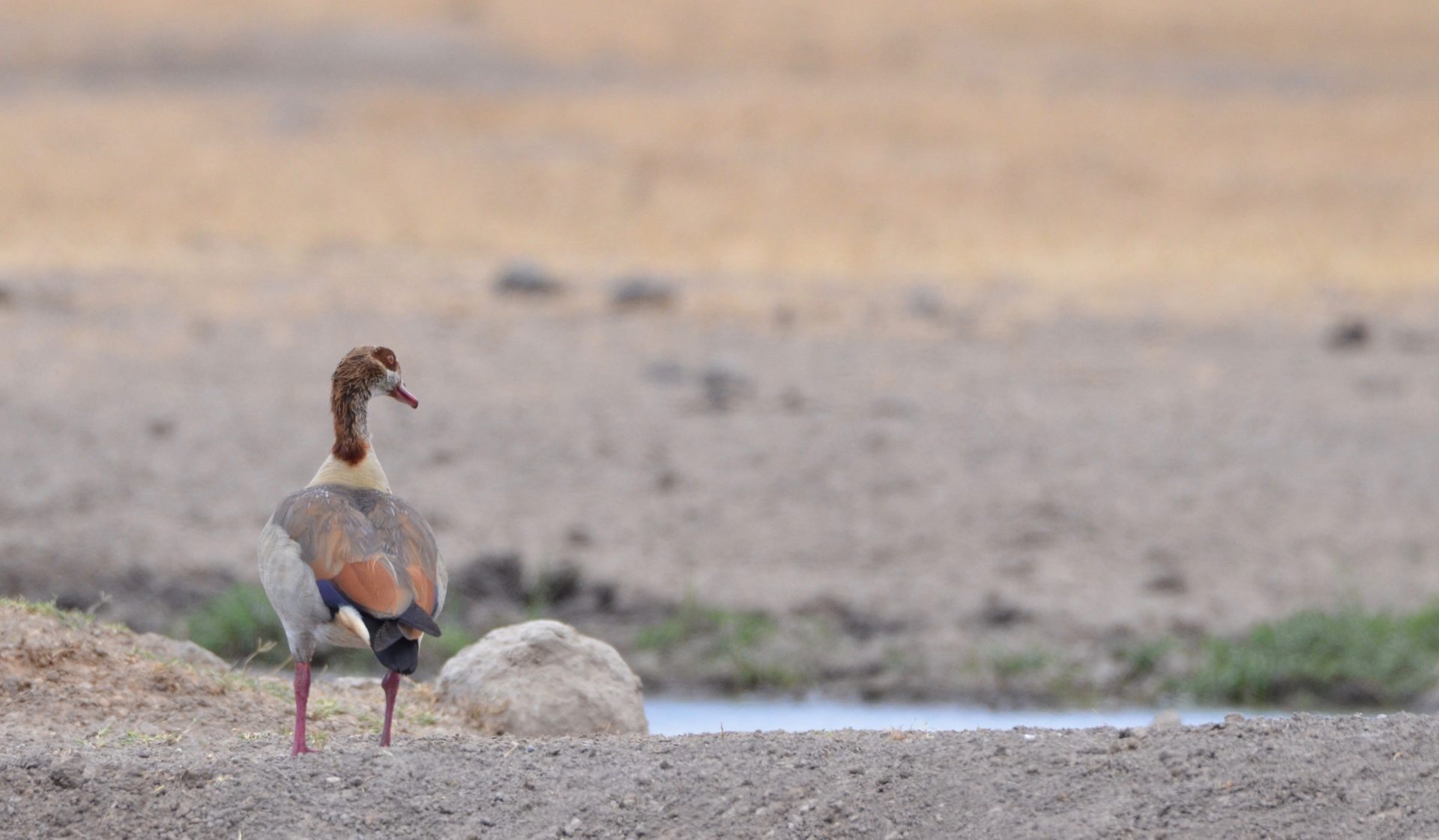
Another beauty is this red-cheeked cordon bleu, a member of the waxbill family.
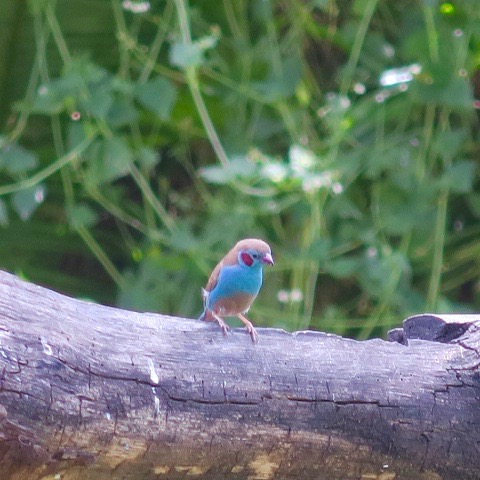
Also abundant around Sweetwaters Camp are sacred ibis, the same bird that the ancient Egyptians worshipped as the god Thoth. The irony is that, while prevalent throughout much of Africa, the sacred ibis is extinct in Egypt.
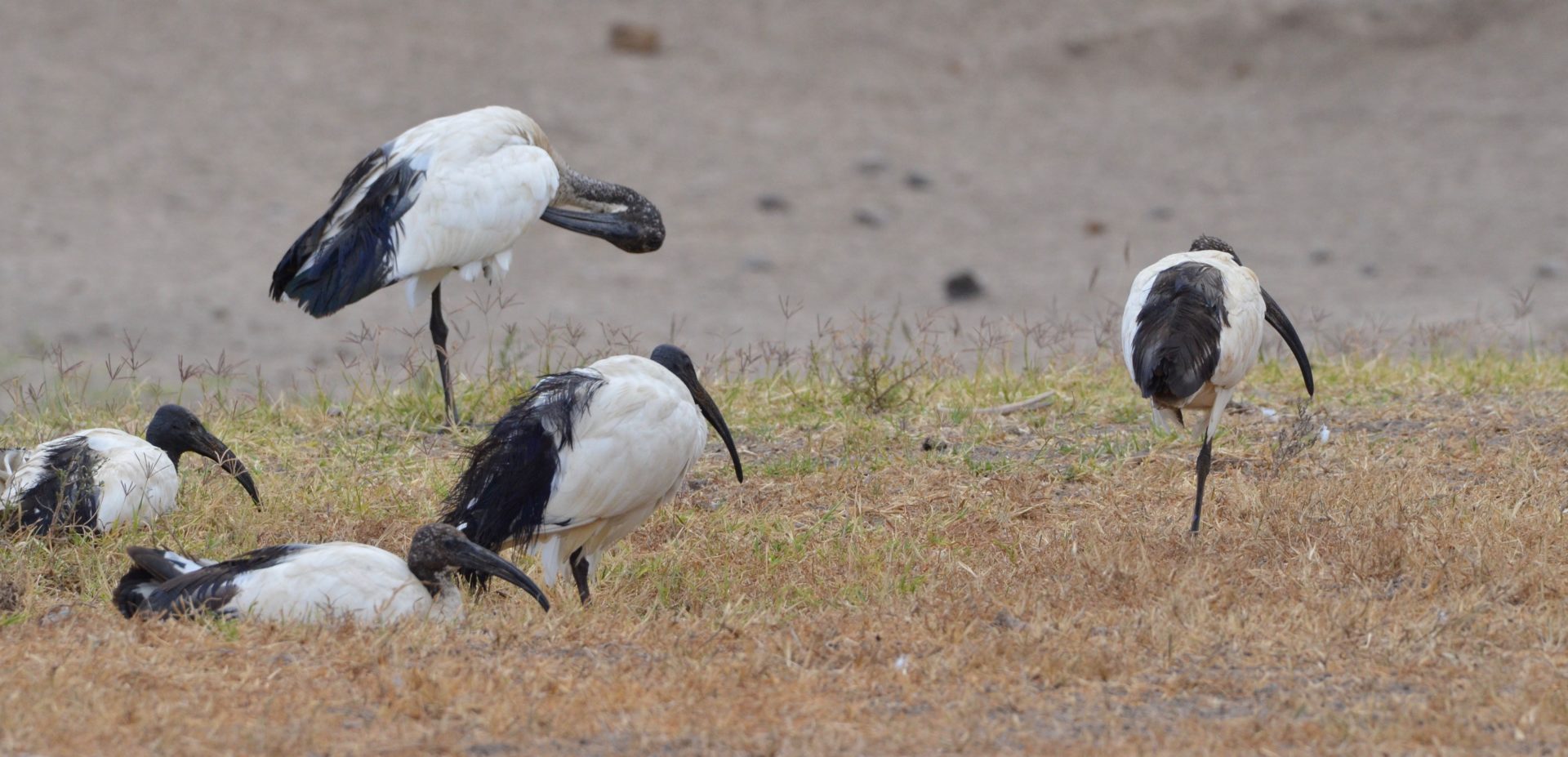
By now I can almost hear the reader saying, “Enough with the bloody birds, let’s go see some real animals!” OK, it’s three o’clock so let’s join our guide and driver Richard and the three other members of our Adventures Abroad group and head out for the first game drive.
The First Game Drive
Although we saw a zebra within minutes of leaving the Nairobi airport and there was a marabou stork staring into our hotel room in Nairobi, we really didn’t see much in the way of wildlife between the city and Sweetwaters Camp so everyone is anxious to get going. This is our driver Richard with our safari vehicle. The top pops up and you can stand up and view the wildlife up close and personal with no bars or windows between you and the animals.
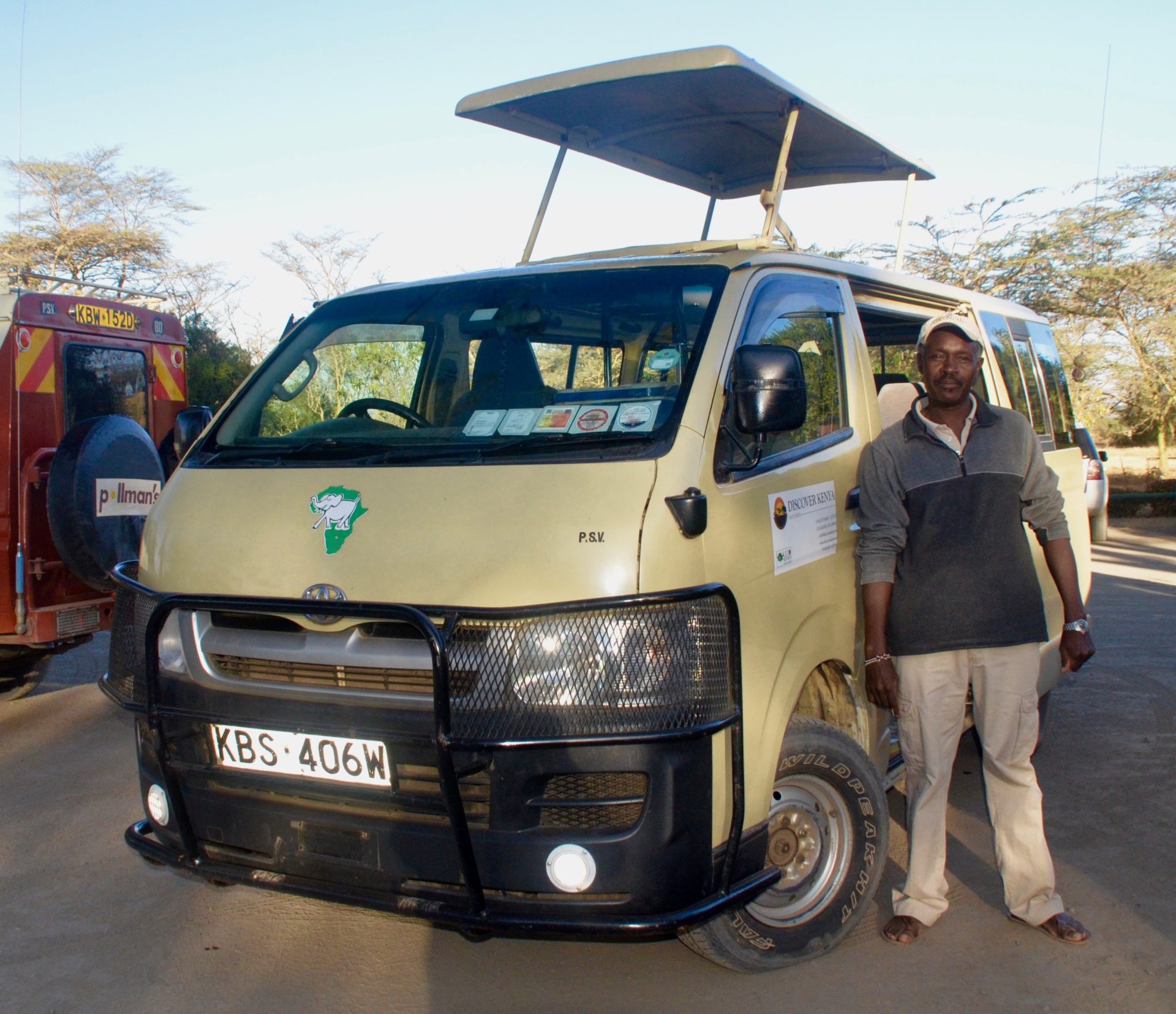
Richard has been guiding for three decades and has the eyes of a figurative hawk. He also knows not only every type of mammal we might see, but the birds as well. Over the next week we would develop a great respect for his abilities as a guide and driver.
The rules of the game are that you keep yourself inside the vehicle at all times except in the few places that Richard determines are safe to stop and exit. We came to one such place not far outside the gates of Sweetwaters Camp. This is Alison and me straddling the equator. Pretty neat, eh?
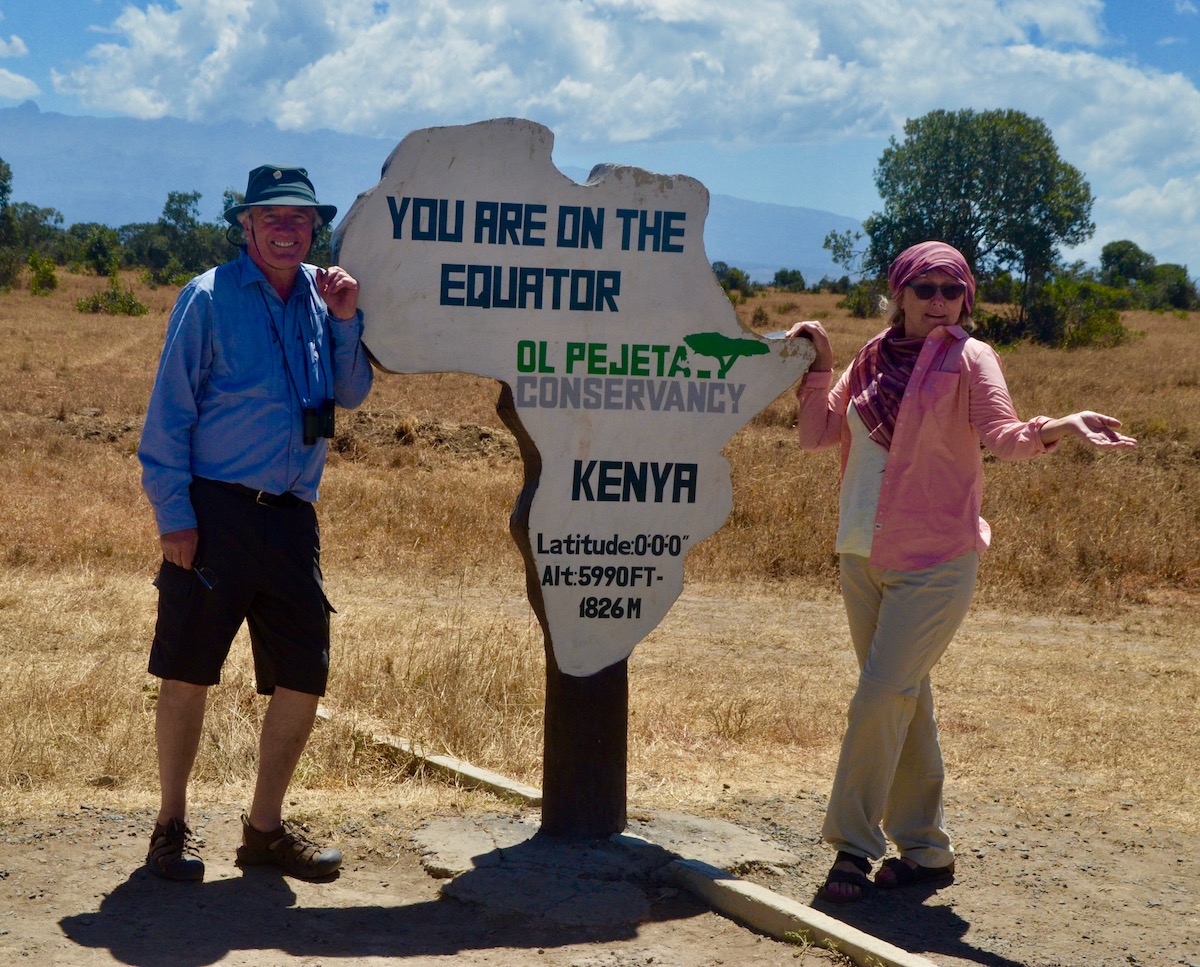
Our first sighting was of a type of antelope that helped make Chevrolet famous – this is a herd of female impalas. Even though they are common place in most game parks, this was our first sighting and the cameras were rolling.
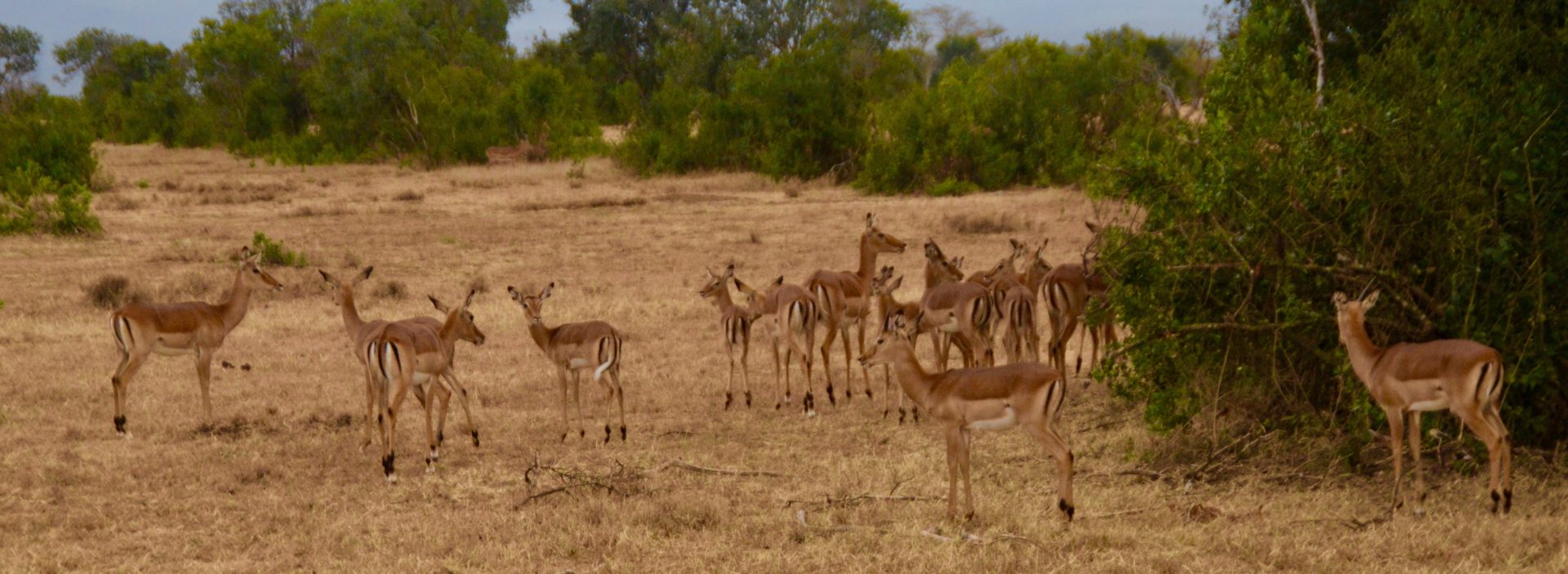
Richard explained that each harem of impalas was presided over by a lone male who would father all future impalas until he was deposed by a younger stronger buck. In a few seconds this guy emerged from the underbrush and made it clear from his stance that he was the boss of these does.
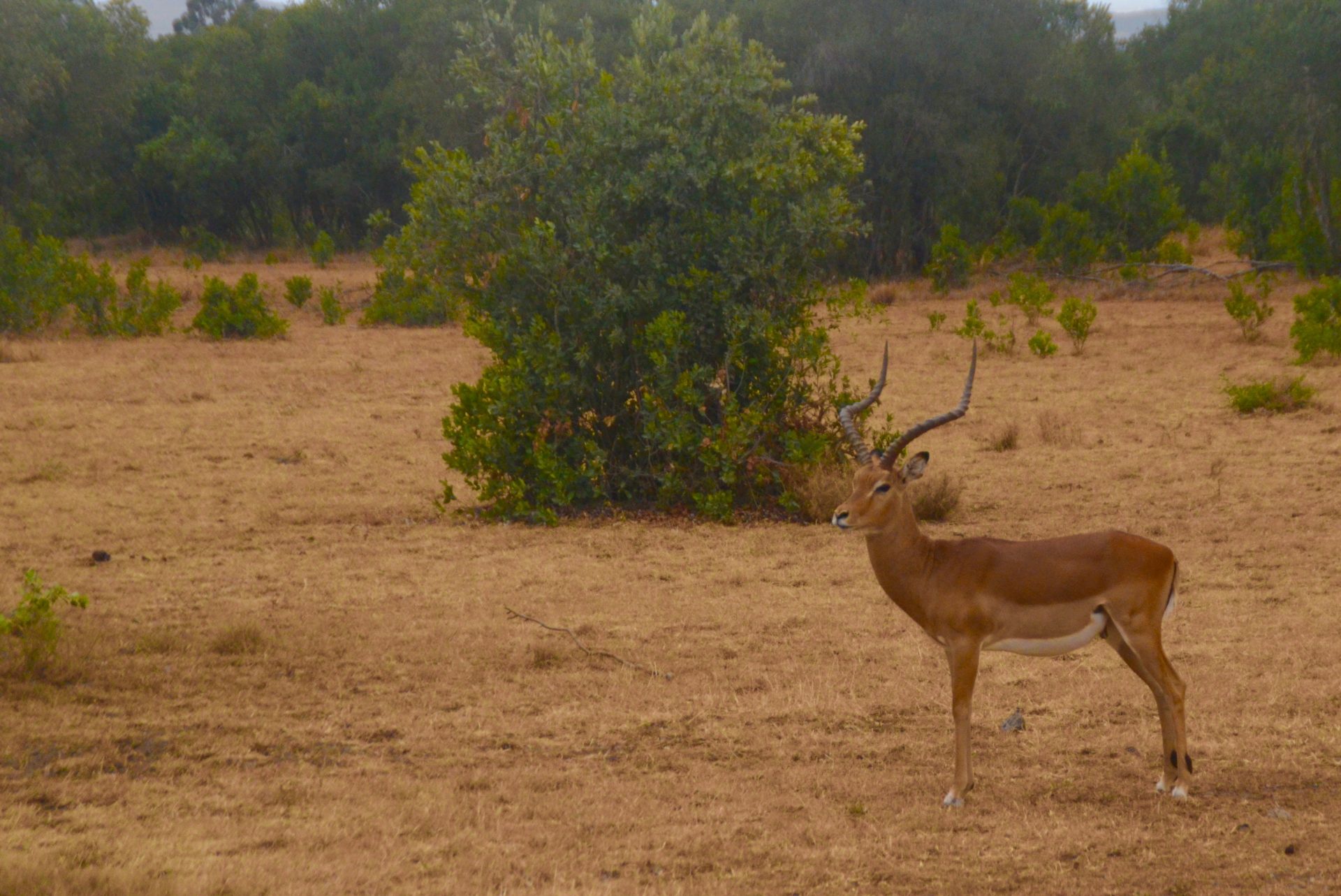
On this first sighting we learned that the animals are used to the safari vehicles and as long as the people stay inside them, they will be ignored and the animals will go about their business as if we weren’t there.
Next up was this male waterbuck, another common African grazer.
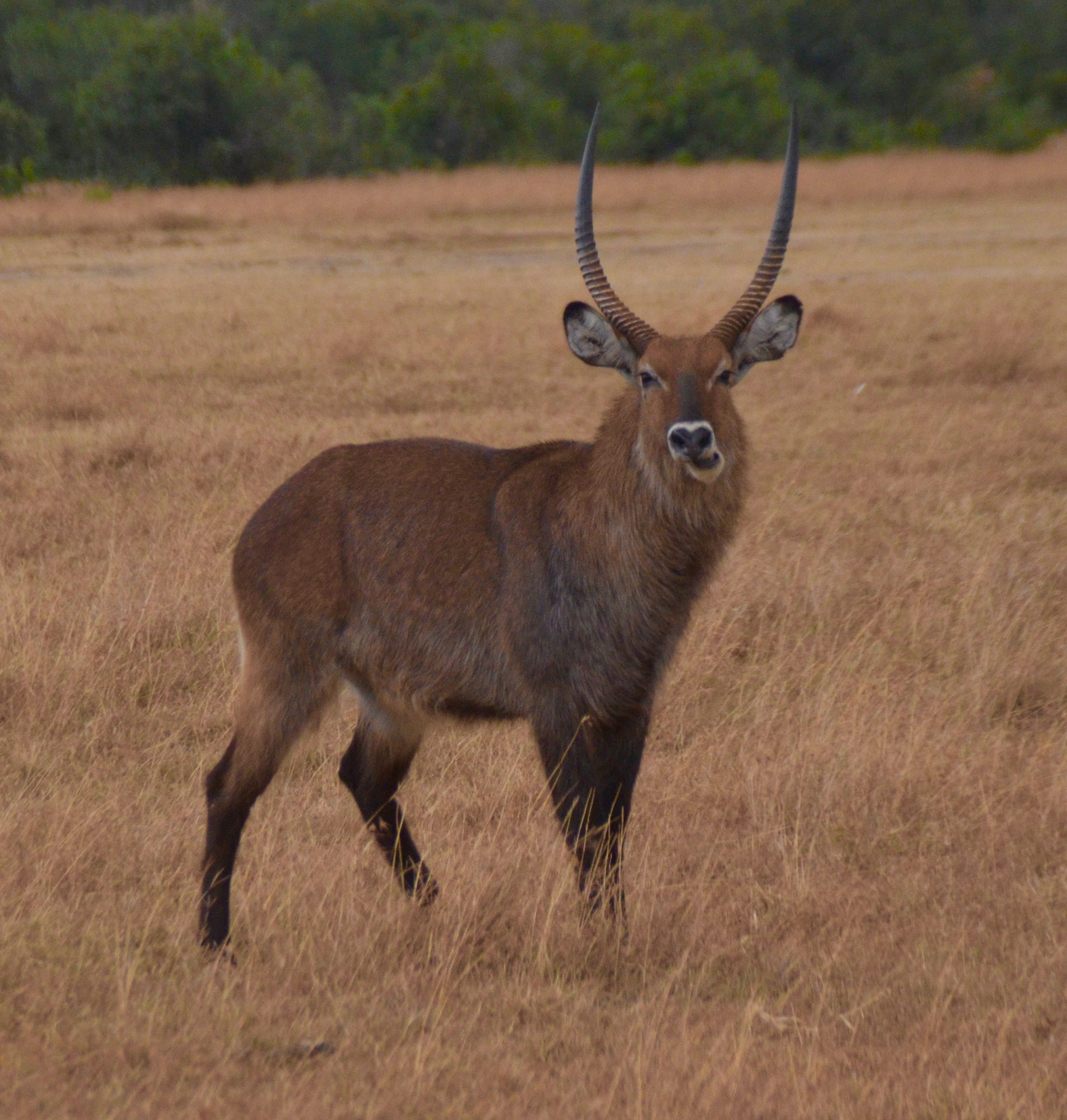
Things got more interesting with this herd of elands, the largest members of the antelope family.

This was the dominant male and he was huge.
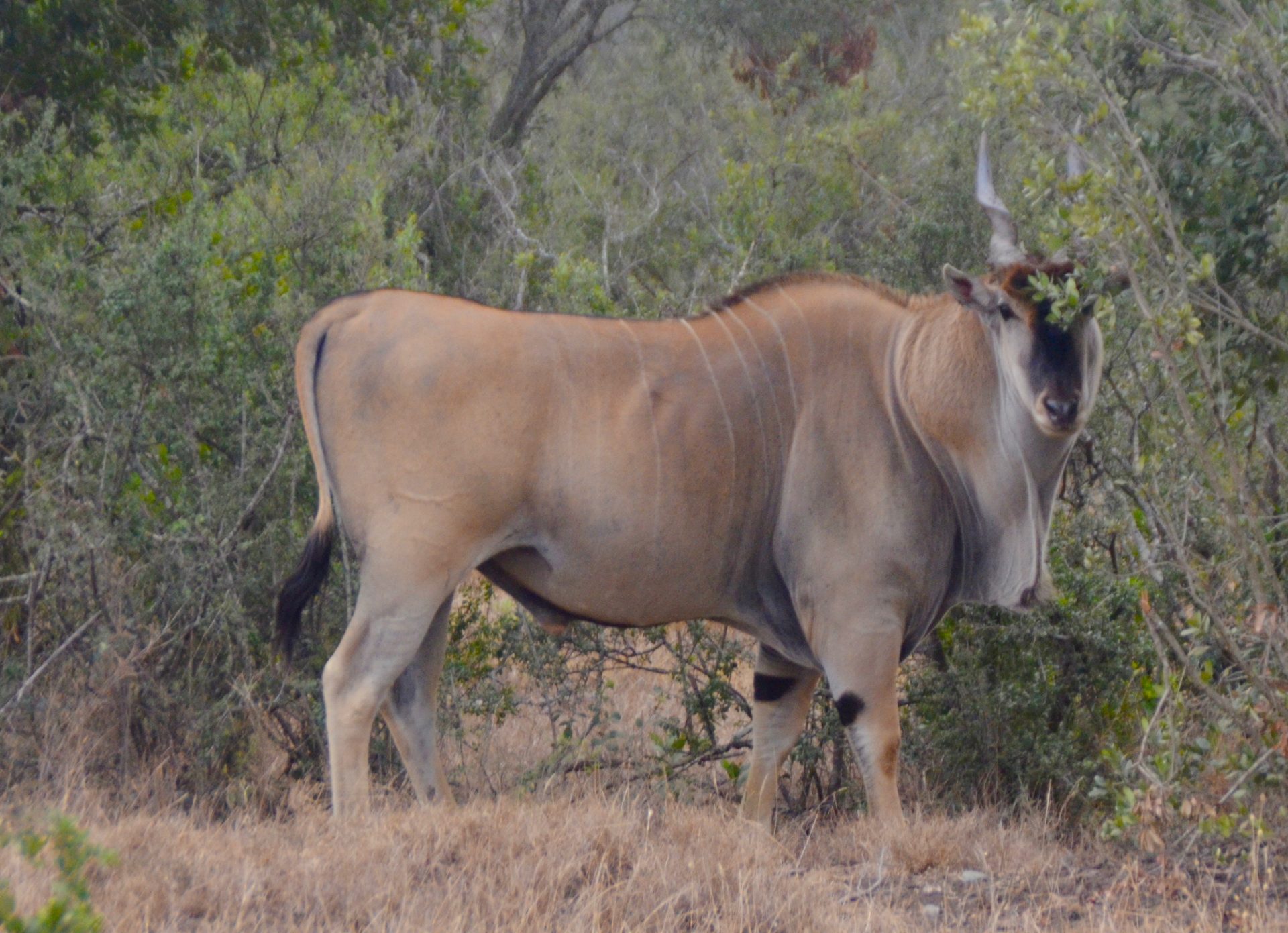
But things kept on getting bigger and bigger, starting with these Cape buffalo. That’s a male on the left with the horns that reminded me of some type of haircut that went out of fashion around WWI. This was our first sighting of one of the ‘Big Five’. This was a term big game hunters used for the five most desirable and dangerous animals to hunt and includes the lion, leopard, rhino and elephant. The Cape buffalo might seem like an unlikely member of this club, but when wounded, these animals instinctively counterattack their assailant and in the days before motor vehicles, often with fatal results. Also, note the oxpeckers that come along as a sideshow with almost every large African ungulate.
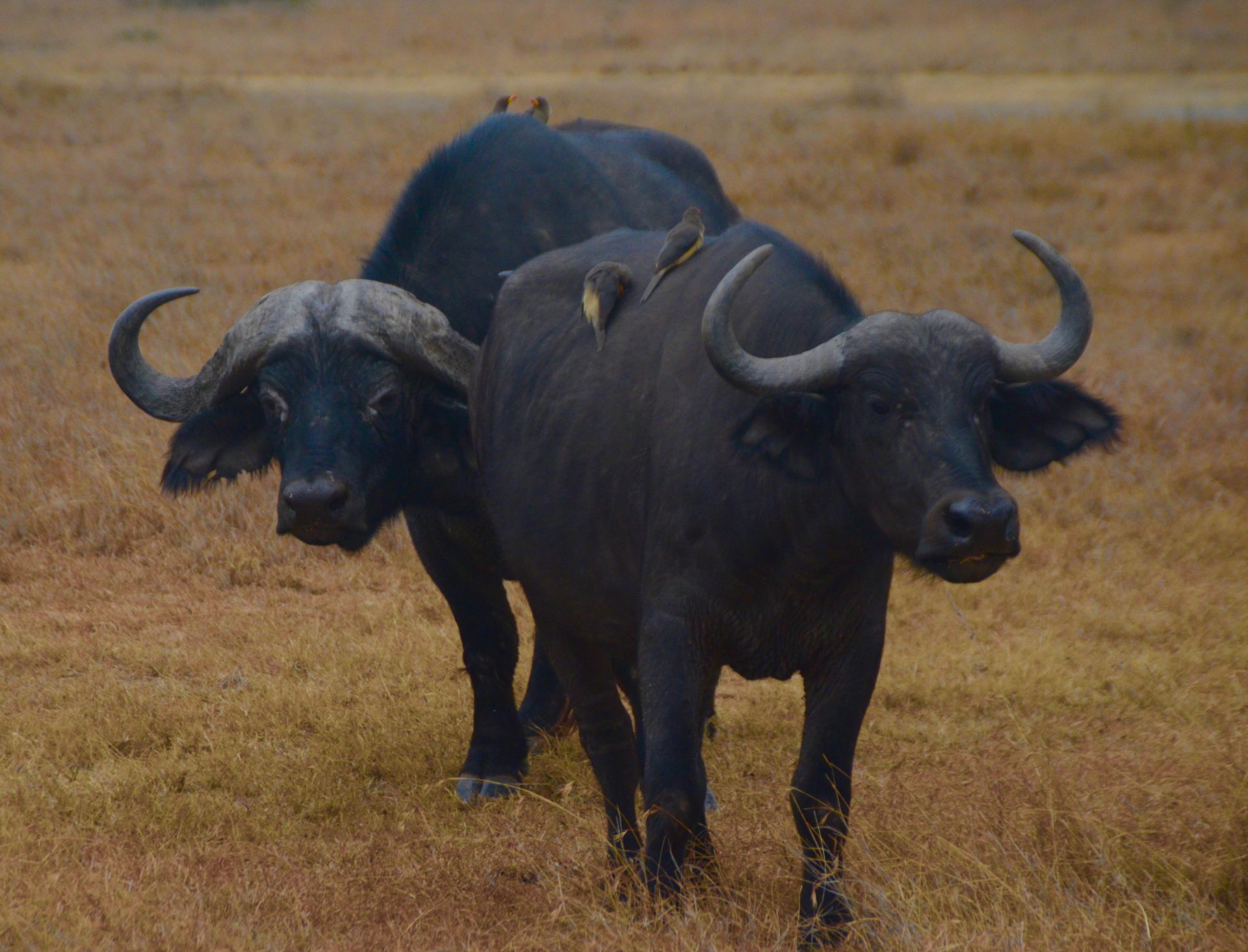
As big as these Cape buffalo were these Enkore cattle that have horns that would make a Texas longhorn jealous. They are native to Uganda and interestingly, were the only ones we saw in Kenya.

Topping the Cape buffalo and the Enkore cattle was this tank-like black rhinoceros. Everyone knows the history of the black and white rhinos and their decimation by poachers who shoot them and take only the horns. It pisses me off too much to write about it, but here’s a link to a good story from the Atlantic on the reasons behind the increase in rhino poaching. Read it and I think you’ll agree that it would be better to kill the Vietnamese millionaires than the rhinos. Nobody would miss them.
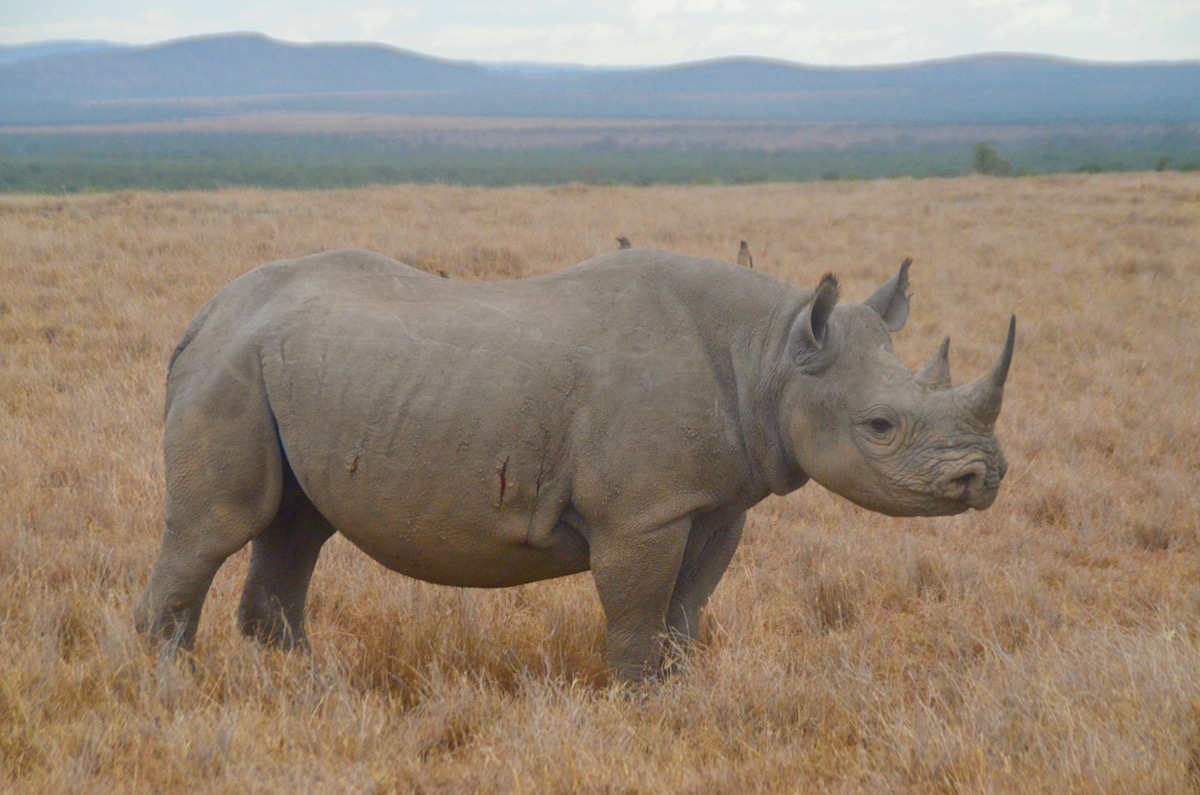
While watching this magnificent beast really brought home to me the tragedy of what is happening to them, at the same time it came home to me that I really was on safari in Africa. I was in the middle of a life time dream and a great one at that. This will always be one of my “Pinch me” moments as I think it would be for anybody seeing a rhino in the wild for the first time.
After this, the sightings came one after another. This is a Thompson’s Gazelle or Tommy and it is the fastest of the antelopes with speeds up to 40 mph. The only problem is that the cheetah, which is its main predator, can get up to 70 mph.
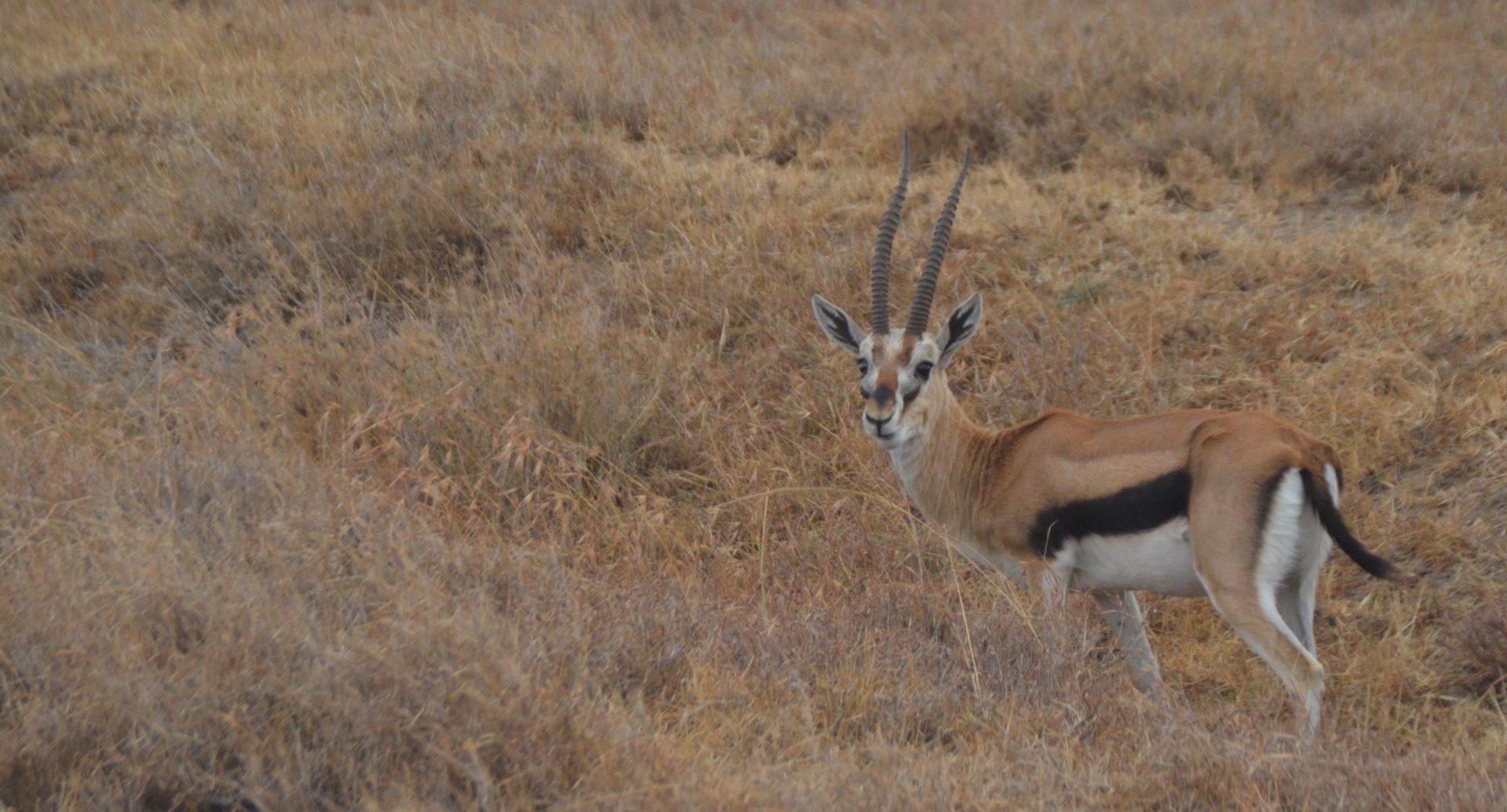
These are Burchell’s zebras which is the most common of the species and we saw many of them including these two mothers and foals.
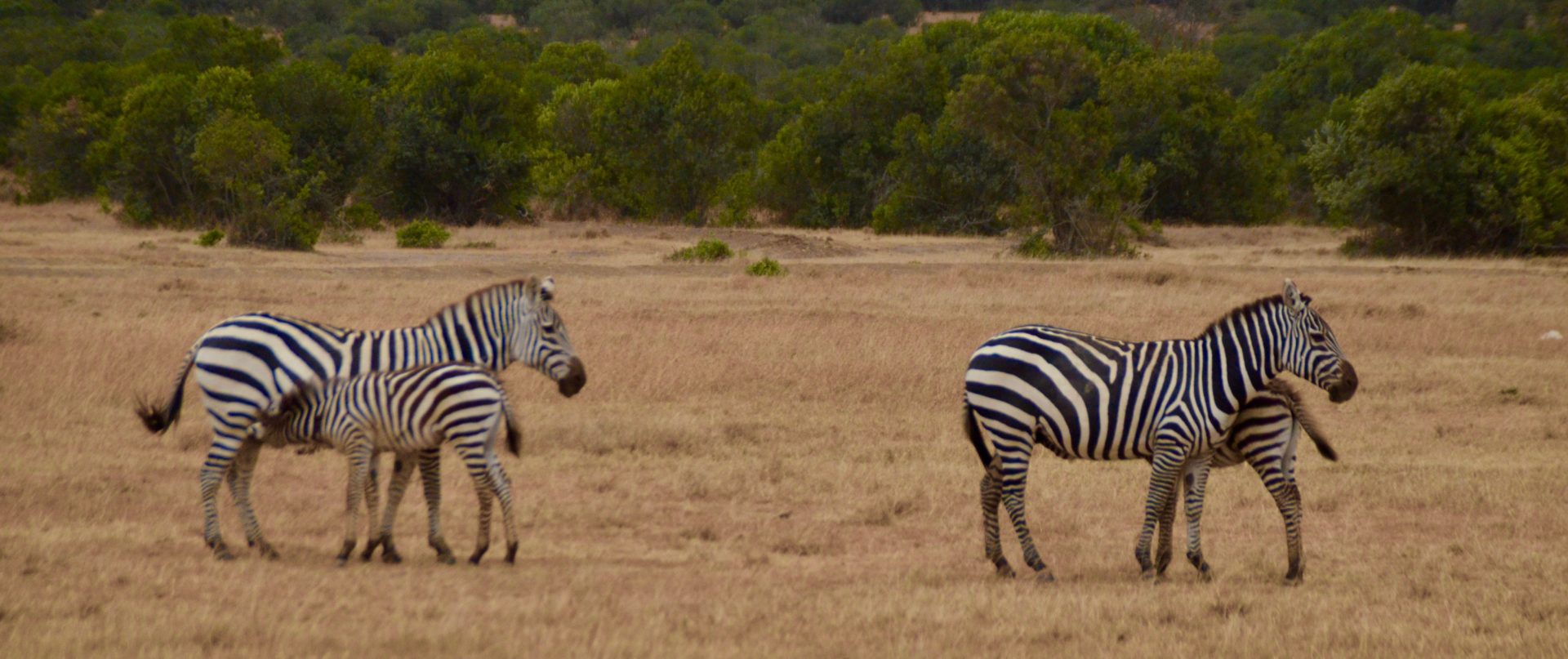
This guy with the gorgeous horns is a Grant’s gazelle, the larger of the two gazelle species.
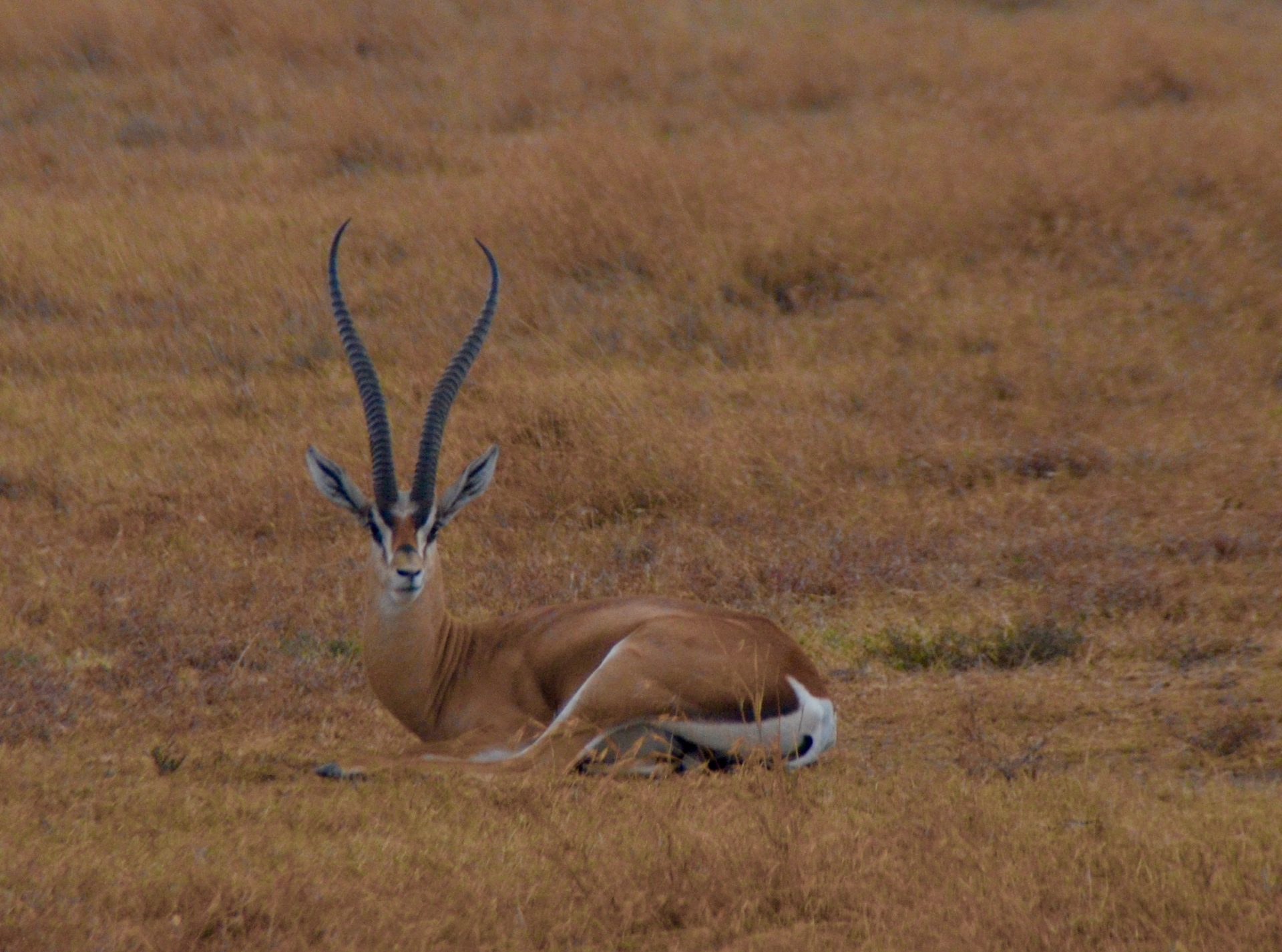
These were the first of many, many warthogs we saw in Kenya. While they look fierce with those tusks, they actually quite comical when you see them in the wild. Shier than most other animals we saw, they take to putting their little tails straight up when they are afraid and seem to run away at the drop of a hat.
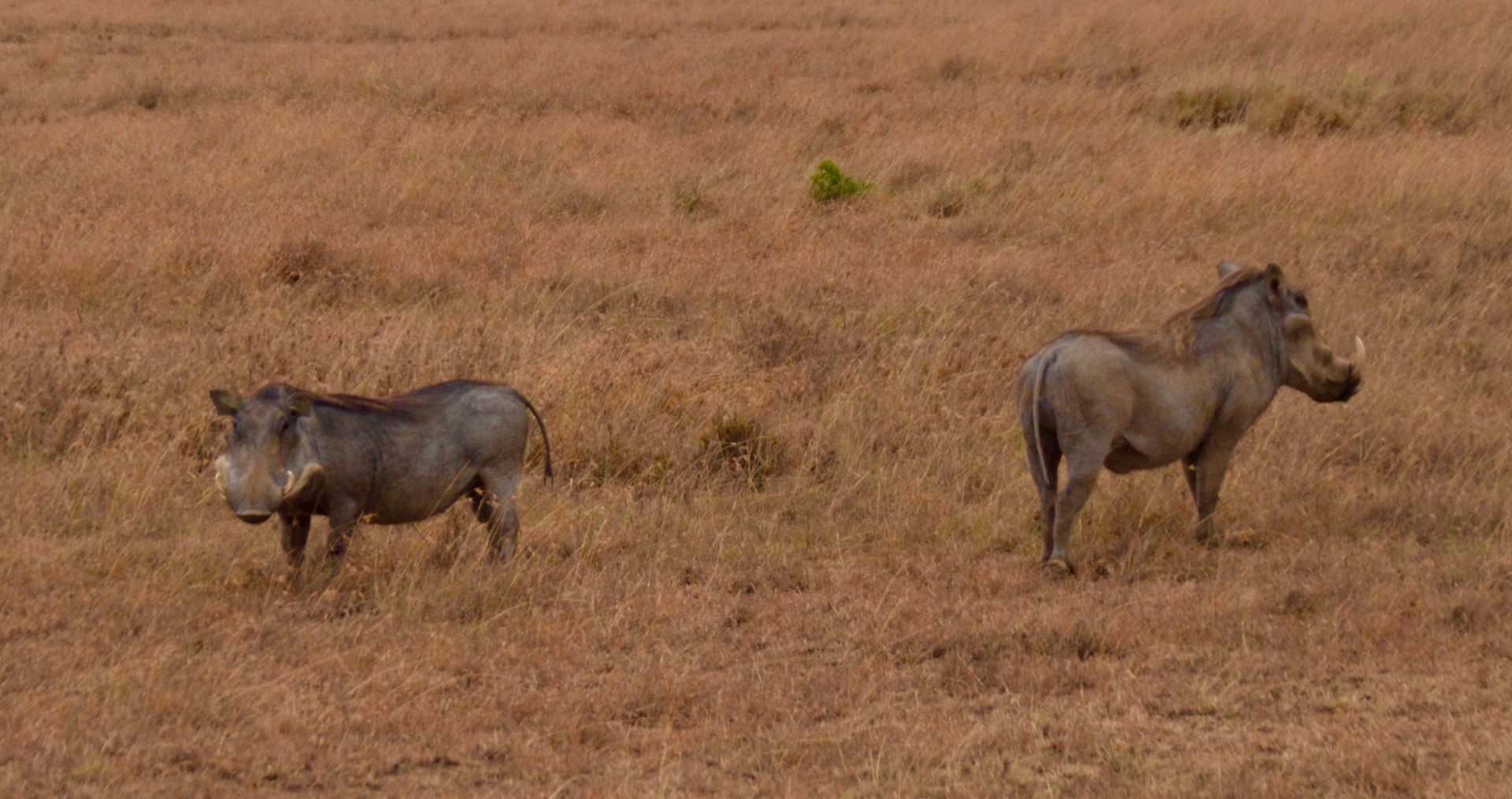
Occasionally one large male would get up enough courage to try to stare us down, at least that’s what it looked like.
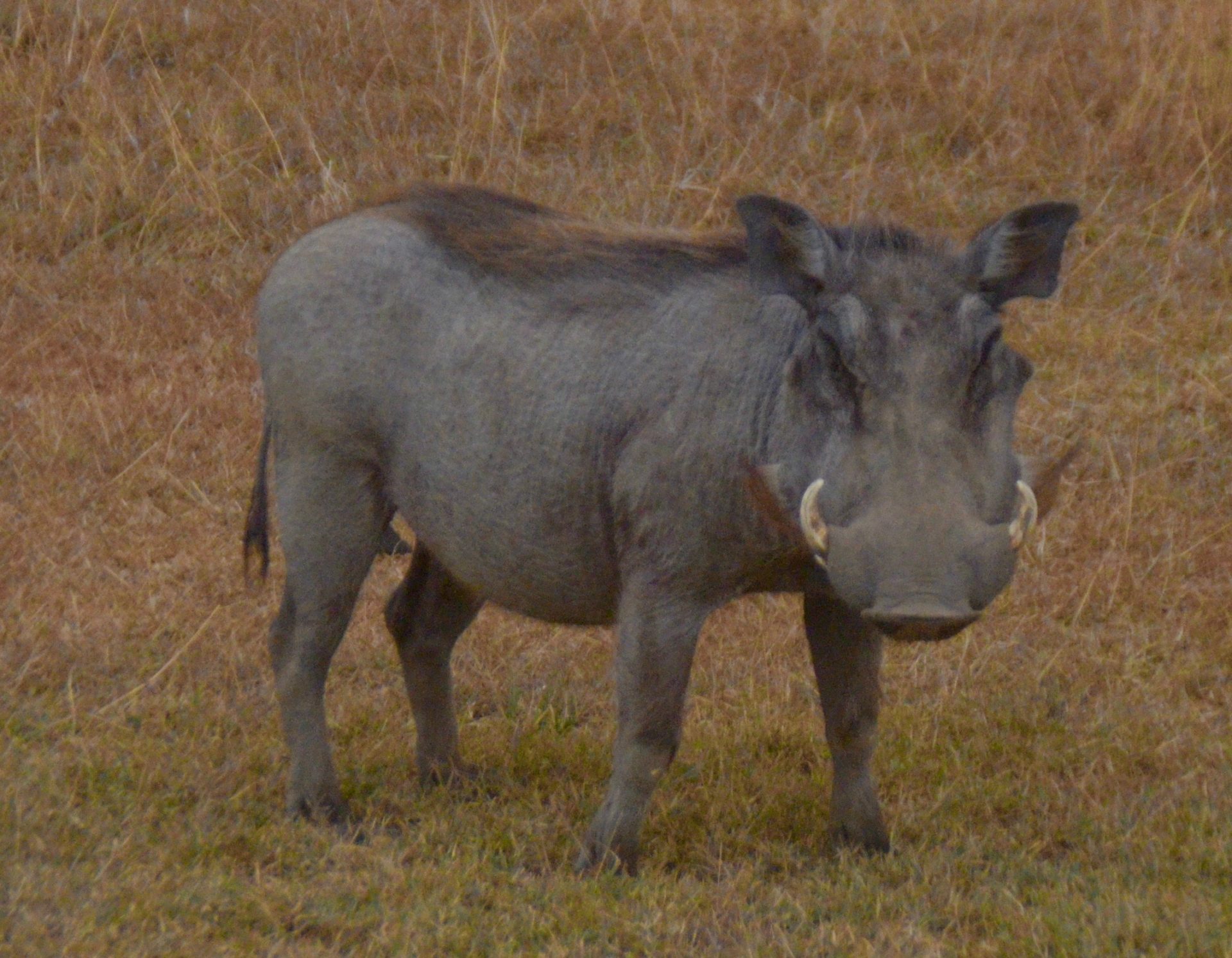
Next up was a somber sight and site. This is the graveyard for rhinos that have been poached in Ol Pejeta, although there were some who died of other causes. Bastards!
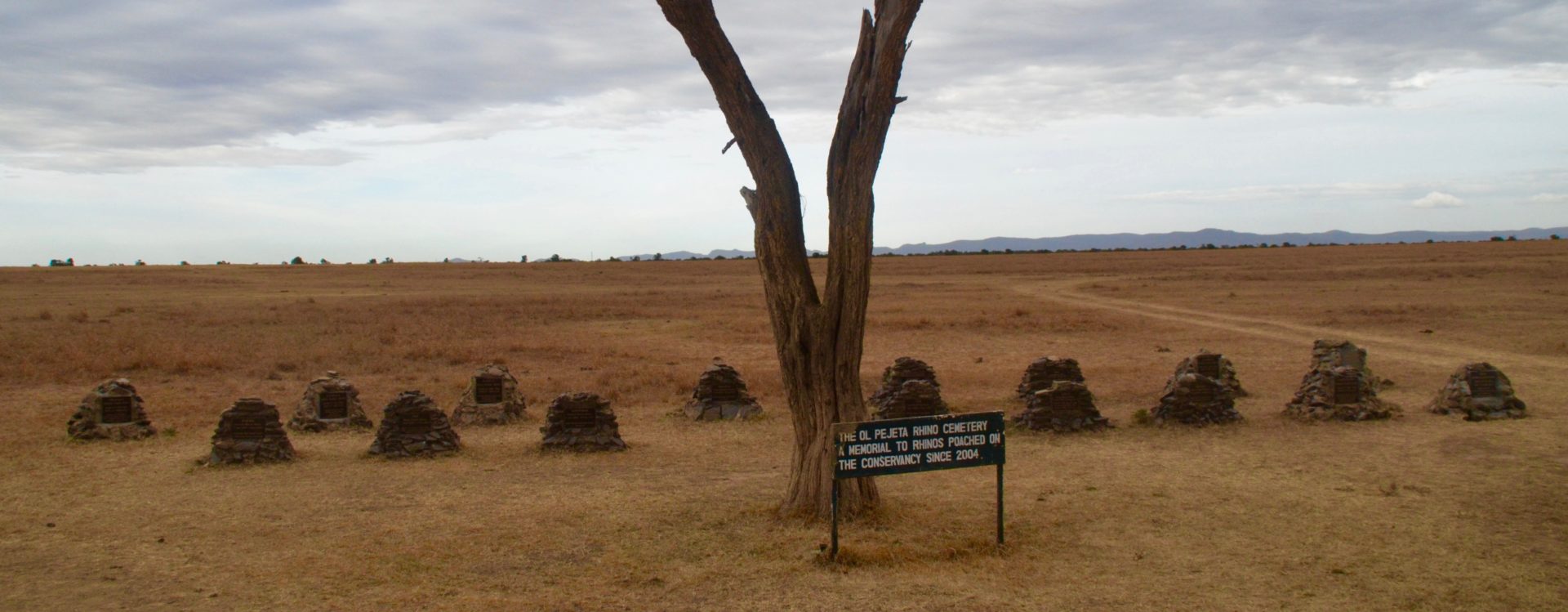
We did see elephants on this first game drive, but they weren’t interested in seeing us and kept on marching into the bush.
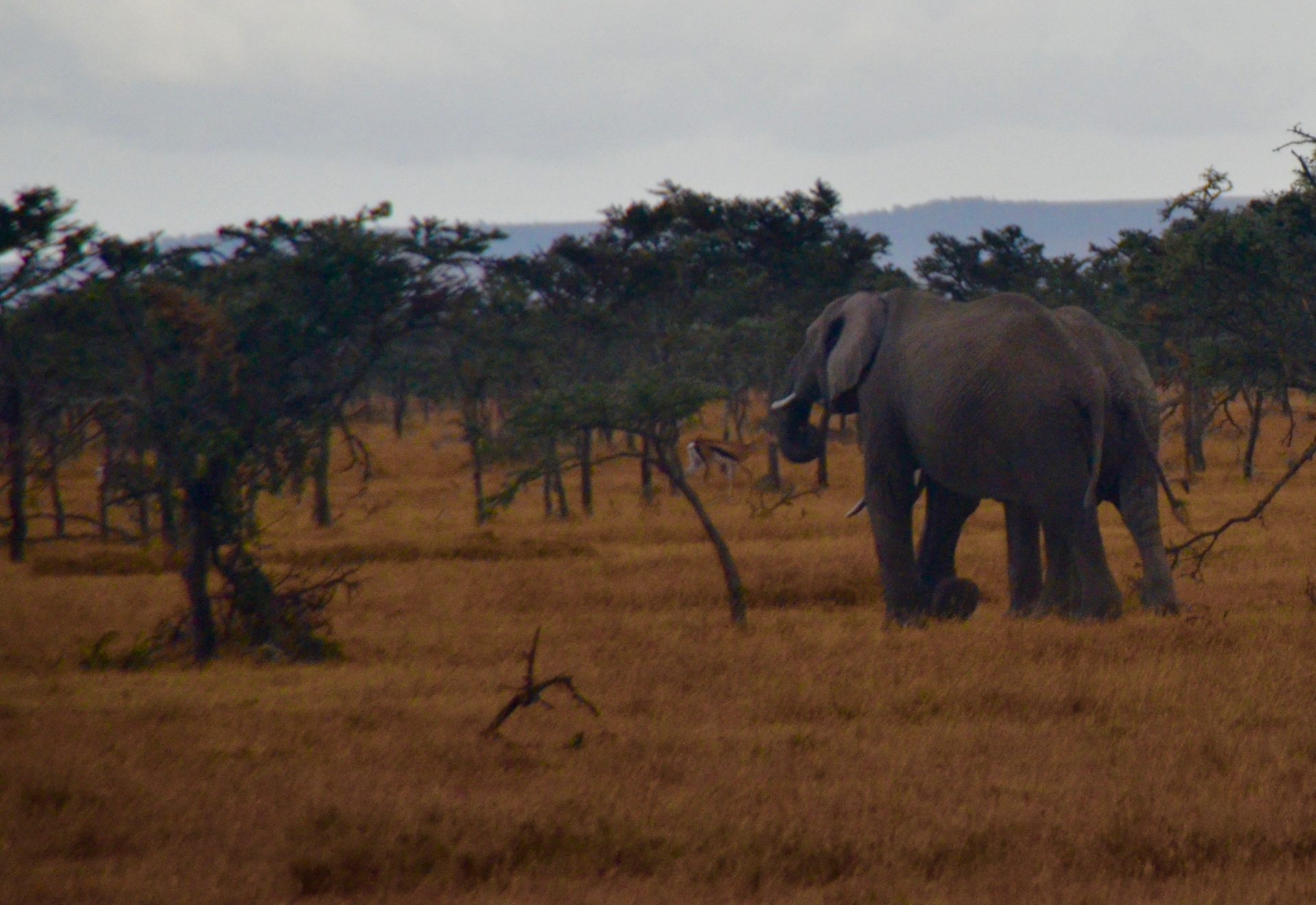
Richard was desperately trying to find a lion for us, but with no luck and it was sundown as we headed back to Sweetwaters Camp. Then, not 200 yards from the entrance, we came across this lone lioness just minding her own business. This is the time when you realize that you are only yards away and unprotected from a creature that could kill you with one swipe of her paws. And yet, there is no fear, absolutely none. Maybe there should be, but there wasn’t. This was my second revelation about being ‘on safari’ that came to me on that first game drive.
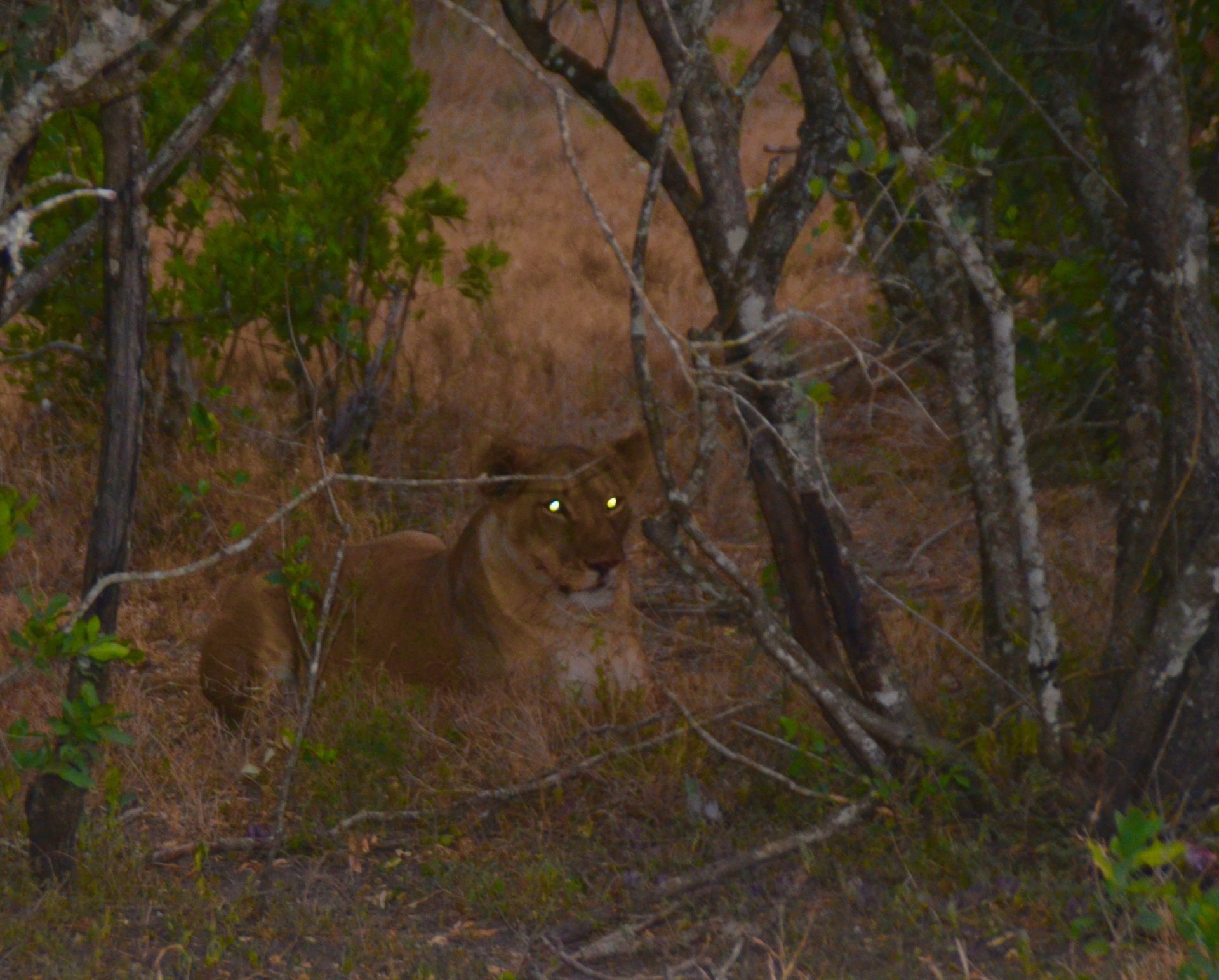
As we re-entered the security of Sweetwaters Camp all I could say was ‘Wow!’. We had seen four of the big five on the first outing. This was going to be a fantastic week. Please join us as we head next to Lake Nakuru, famed for its flamingoes.
Here is a link to the Kenya photo gallery with shots from all of the reserves we visited on this trip.

